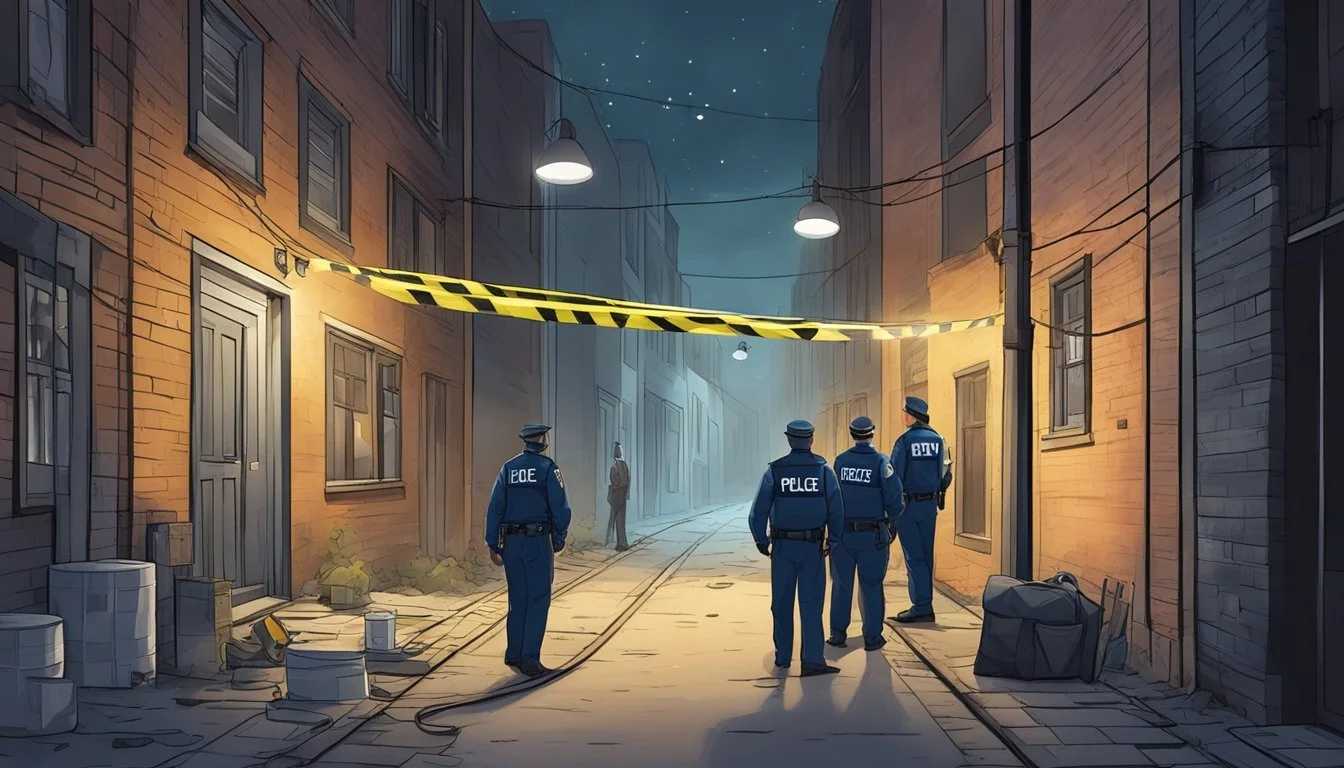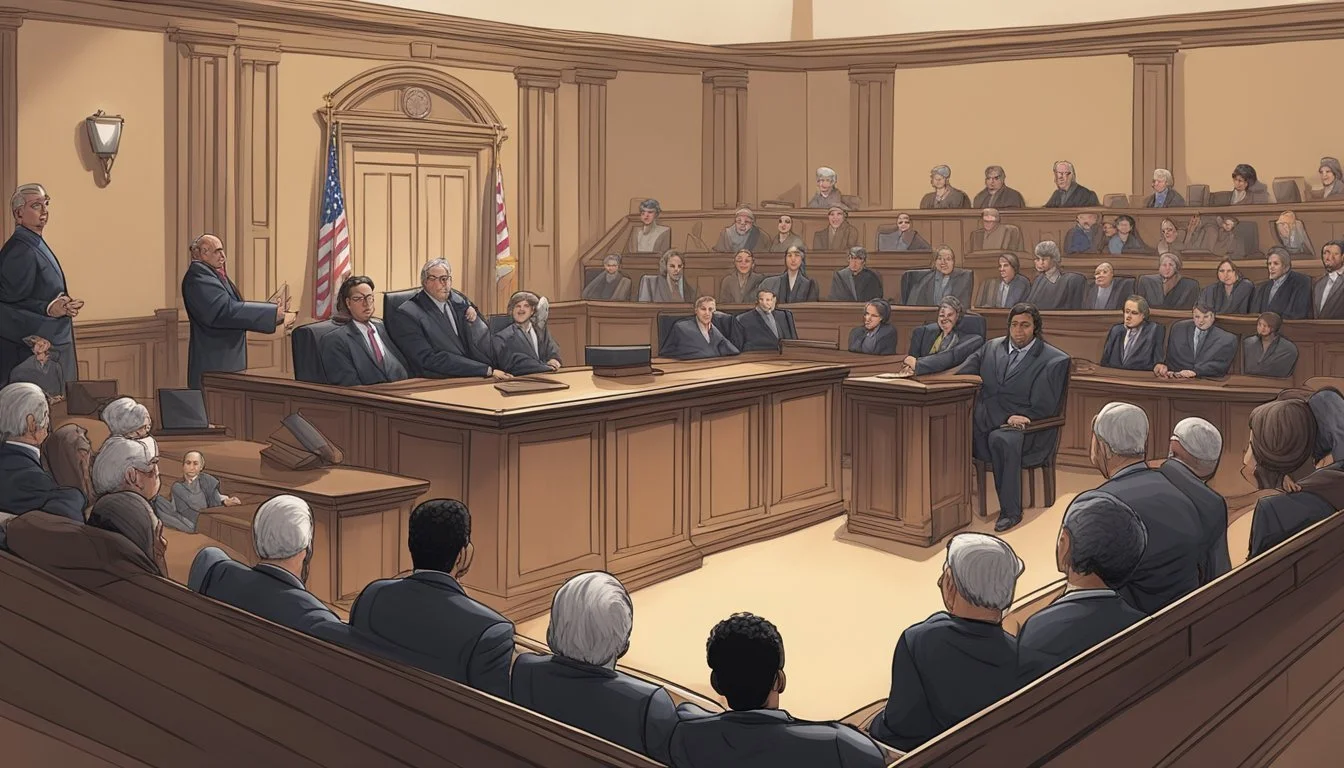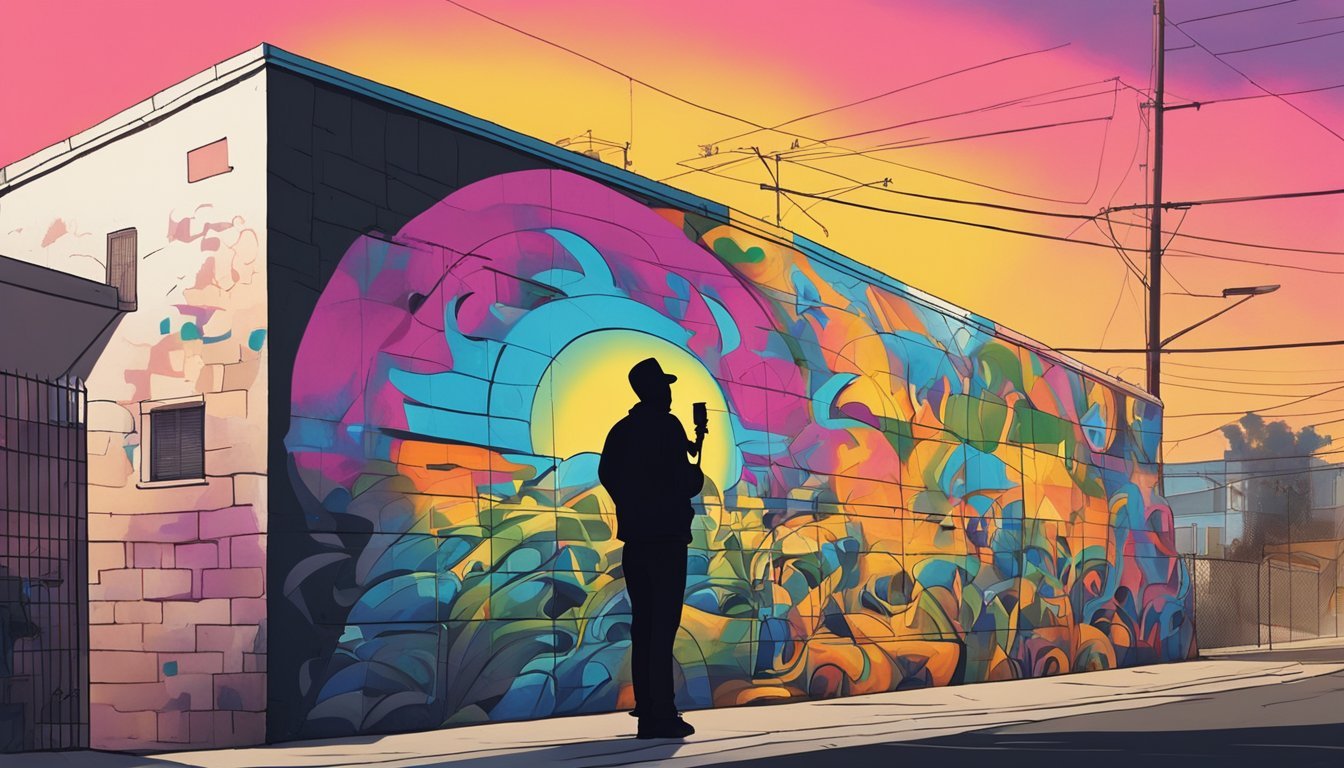South Central Slayer: Joseph Miller's Los Angeles Nightmare Terrorizes Community
Joseph Miller, known as the South Central Slayer, brought terror to Los Angeles in the early 1990s. His crimes occurred against a backdrop of rising gang violence and economic struggles in South Central L.A. Miller's killing spree exposed deep-rooted issues of neglect and institutional failures in one of America's most notorious urban areas.
South Central Los Angeles had experienced significant demographic shifts since the early 20th century. By the 1980s and 1990s, the area was grappling with poverty, crime, and lack of opportunities. These conditions created an environment where predators like Miller could operate undetected for extended periods.
Miller's reign of terror highlighted the vulnerabilities of a community already struggling with numerous challenges. His case sparked discussions about public safety, law enforcement practices, and the need for community-based initiatives to address the root causes of crime in South Central Los Angeles.
Profile of Joseph Miller
Joseph Miller, known as the South Central Slayer, terrorized Los Angeles in the late 1980s. His background and psychological profile provide insight into the man behind the brutal crimes.
Background and Early Life
Joseph Miller grew up in challenging circumstances. He had limited formal education, only completing the fourth grade. This lack of schooling left Miller functionally illiterate as an adult.
Miller's IQ was measured at 69, placing him in the intellectually disabled range. His cognitive limitations likely impacted his development and decision-making abilities.
Despite his educational deficits, Miller was able to hold various jobs as an adult. He worked primarily as a laborer and handyman in the Los Angeles area.
Psychological Profile
Miller exhibited traits common to serial killers. He lacked empathy for his victims and showed no remorse for his crimes.
Experts believe Miller's low IQ and poor education contributed to his violent behavior. He struggled to control his impulses and had difficulty understanding the consequences of his actions.
Miller targeted vulnerable women, often sex workers or drug addicts. He used his job as a handyman to gain access to potential victims.
During interrogations, Miller displayed a calm demeanor. This behavior contrasted sharply with the brutality of his crimes, confusing investigators.
The Crimes of The South Central Slayer
Joseph Miller terrorized South Central Los Angeles in the 1980s, targeting vulnerable women. His brutal crimes shocked the community and left a trail of devastation in their wake.
Timeline of Murders
Miller's killing spree began in 1981 and continued until his arrest in 1986. He claimed his first known victim on January 1, 1981. Over the next five years, Miller murdered at least 10 women, though some estimates suggest the total could be higher.
Most of the killings occurred between 1983 and 1985, with clusters of murders happening within weeks of each other. Miller's final known victim was discovered in October 1986, shortly before his capture.
Identified Victims
Authorities conclusively linked Miller to 10 murders:
Debra Lowe, 20
Margette Terrell, 25
Myrtle Collier, 41
Alma Sharp, 41
Verna Williams, 36
Marjorie Nelson, 23
Melinda Dawson, 20
Cheryl Sayers, 25
Donna Reed, 28
Vivian Holloway, 32
Most victims were African American women involved in prostitution or drug use. Their bodies were found in alleys, vacant lots, and dumpsters throughout South Central Los Angeles.
Method of Operation
Miller targeted vulnerable women, often approaching them under the guise of soliciting sex. He would then violently assault and strangle his victims. In some cases, Miller also used ligatures or stabbed the women.
After killing, Miller typically dumped the bodies in secluded areas. He sometimes partially clothed or posed the victims' bodies. Miller's attacks were characterized by their brutality and sexual nature.
DNA evidence eventually linked Miller to multiple crime scenes, leading to his arrest and conviction. His consistent method of operation helped investigators connect the string of murders to a single perpetrator.
Law Enforcement and Investigation
The Joseph Miller case presented significant challenges for law enforcement. Detectives pursued multiple leads and employed advanced forensic techniques to identify and apprehend the South Central Slayer.
Early Investigation Steps
The LAPD formed the 800 Task Force to investigate the string of murders in South Central Los Angeles. Detectives canvassed neighborhoods, interviewed witnesses, and analyzed crime scene evidence. They noted similarities between victims, including their demographics and the methods used.
The task force compiled a list of potential suspects based on tips and prior offenses. They also released a composite sketch of the suspect to the public, hoping to generate new leads.
Despite these efforts, progress was slow initially. The killer's sporadic pattern of attacks and the lack of physical evidence made it difficult for investigators to narrow down suspects.
Breakthroughs in the Case
A major breakthrough came when detectives linked DNA evidence from multiple crime scenes. This confirmed their suspicion that a single perpetrator was responsible for the murders.
The task force intensified their efforts, focusing on building a genetic profile of the killer. They also re-examined cold cases, looking for potential connections to the South Central Slayer.
Another key development occurred when a survivor provided crucial details about the attacker. This eyewitness account helped refine the suspect profile and led to increased patrols in targeted areas.
Use of DNA Evidence
DNA analysis played a pivotal role in solving the case. Investigators used advanced techniques to extract usable DNA samples from crime scenes, even when evidence was degraded.
The genetic profile obtained from these samples was run through databases, searching for potential matches. This process helped eliminate some suspects and focus attention on others.
As DNA technology improved, cold case detectives revisited old evidence. They conducted a second autopsy on one victim, yielding new DNA samples that strengthened the case.
The final breakthrough came when a familial DNA search produced a partial match, leading investigators to Joseph Miller. A subsequent DNA test confirmed Miller as the South Central Slayer, ending the long-running investigation.
Trials and Legal Proceedings
Joseph Miller faced multiple legal proceedings for his heinous crimes in South Central Los Angeles. The path to justice involved complex trials and lengthy court battles.
First Arrest and Trial
Miller's initial arrest came in 1987 after a surviving victim identified him. The first trial began in 1989, with Deputy Dist. Atty. John Watson leading the prosecution. Charges included multiple counts of murder and attempted murder.
Key evidence included DNA samples and witness testimonies. The trial lasted several months, with the prosecution seeking the death penalty. However, legal complications arose during the proceedings.
In a surprising turn, the judge declared a mistrial due to jury misconduct. This decision dealt a blow to the victims' families and the prosecution team.
Second Trial and Conviction
Following the mistrial, prosecutors prepared for a second trial. This time, they presented a stronger case with additional forensic evidence.
The second trial commenced in 1991. Gail M. Ficklin joined the prosecution team, bringing fresh strategies to the courtroom.
Miller's defense team fought hard, but the evidence was overwhelming. After weeks of testimony, the jury reached a verdict.
On September 15, 1991, Joseph Miller was found guilty on all counts. The judge sentenced him to death, labeling him a convicted killer.
Miller's case became a landmark in South Central Los Angeles criminal history. It highlighted the challenges in prosecuting serial killers and the importance of forensic evidence in securing convictions.
Community and Media Response
Joseph Miller's crimes sent shockwaves through South Central Los Angeles, sparking intense media coverage and community reactions. Residents mobilized to increase safety, while victims' families sought justice and healing.
Media Coverage and Perception
The South Central Slayer case dominated local news outlets. Newspapers and TV stations provided frequent updates on the investigation and manhunt. Some media portrayals faced criticism for sensationalizing the crimes or perpetuating harmful stereotypes about the neighborhood.
Documentaries like "The Lost Women of South Central" aimed to humanize victims and explore systemic issues underlying the case. These films highlighted socioeconomic challenges and alleged police neglect in the area.
Community Vigilance
Miller's crimes prompted increased neighborhood watch efforts. Residents organized safety patrols and distributed flyers with safety tips. Community leaders held town halls to discuss crime prevention strategies.
Local activist Margaret Prescod founded the Black Coalition Fighting Back Serial Murders to advocate for victims' families and push for a more robust police response. The group organized vigils, marches, and public awareness campaigns.
Impact on Victims' Communities
The killings left deep scars on victims' families and friends. Support groups formed to provide counseling and resources. Some relatives became vocal advocates against violence toward women.
The case exposed racial and class disparities in how murders were investigated and reported. It sparked discussions about the need for better services and economic opportunities in South Central.
Community centers expanded programs for at-risk youth and women in response to the tragedy. Local churches held healing services and prayer vigils for those affected by the crimes.
Comparison with Other Serial Killers of the Era
Joseph Miller's crimes coincided with those of several other notorious serial killers active in Los Angeles during the 1980s and early 1990s. These predators targeted similar victim demographics and neighborhoods, creating an atmosphere of fear and distrust.
Lonnie David Franklin Jr. - The Grim Sleeper
Lonnie David Franklin Jr., known as the Grim Sleeper, operated in South Los Angeles from 1984 to 2007. He murdered at least 10 women, primarily targeting African American sex workers and drug users.
Franklin's modus operandi involved shooting his victims and dumping their bodies in alleys and dumpsters. His nickname stemmed from an apparent 14-year hiatus in his killings.
Unlike Miller, Franklin evaded capture for decades due to DNA evidence limitations and a lack of connections between the crimes. He was finally arrested in 2010 through familial DNA matching.
Chester Turner
Chester Turner terrorized South Central Los Angeles from 1987 to 1998. He was convicted of murdering 14 women and one unborn child, though he is suspected of additional killings.
Turner's victims were predominantly African American women involved in sex work or struggling with addiction. He strangled most of his victims and left their bodies in alleys, vacant buildings, or lots.
Turner's crimes overlapped temporally and geographically with Miller's. Both targeted vulnerable women in similar areas, contributing to the "Southside Slayer" panic of the 1980s.
Richard Ramirez - The Night Stalker
Richard Ramirez, dubbed the Night Stalker, spread terror across Los Angeles and San Francisco from 1984 to 1985. His crimes differed significantly from Miller's in their randomness and brutality.
Ramirez broke into homes, attacking men, women, and children indiscriminately. His methods varied, including shooting, stabbing, and bludgeoning victims.
Unlike Miller, who targeted a specific demographic, Ramirez's victims spanned various ages, races, and socioeconomic backgrounds. His highly publicized trial and Satanic associations set him apart from other serial killers of the era.
Cultural Impact and Legacy
Joseph Miller's crimes as the South Central Slayer left an indelible mark on Los Angeles and popular culture. His brutal acts sparked discussions about urban safety and influenced portrayals of serial killers in media.
Influence on Film and Television
The South Central Slayer case inspired several films and TV episodes. Notable examples include a gritty episode of "Law & Order: Special Victims Unit" set in Los Angeles. The case also influenced the creation of darker, urban-focused crime dramas.
Horror maestro Wes Craven drew inspiration from Miller's nocturnal attacks for elements of "A Nightmare on Elm Street." The film's premise of a killer stalking victims in their sleep mirrored the fear that gripped South Central during Miller's reign of terror.
Several true crime documentaries featured the case, using actual filming locations to recreate the atmosphere of 1980s South Central LA. These productions often highlighted the community's struggle with poverty and crime.
Ongoing Conversations about Safety and Prevention
Miller's crimes sparked renewed focus on urban safety initiatives. Community watch programs flourished in South Central LA and similar neighborhoods across the country.
The American Jewish University hosted symposiums examining the societal factors that allowed Miller to operate undetected for so long. These events brought together law enforcement, sociologists, and community leaders.
Discussions about improving street lighting and increasing police patrols in vulnerable areas gained traction. City planners incorporated safety considerations into urban renewal projects.
The case highlighted the need for better support systems for marginalized communities. Non-profit organizations focused on empowering residents and providing resources to combat the "dark underbelly" of urban life.
Case Study in Criminal Analysis
Joseph Miller's criminal activities in South Central Los Angeles provided valuable insights for law enforcement and criminal profilers. The case highlighted crucial aspects of serial killer investigations and community impact.
Criminal Profiling
Miller's modus operandi focused on vulnerable Black women in South Central LA. He targeted sex workers and drug users, exploiting their marginalized status. Profilers noted his calculated approach, as he often lured victims to secluded areas before attacking.
Miller's crimes spanned from 1987 to 1993, with periods of inactivity. This pattern suggested a level of self-control atypical of impulsive offenders. Analysts also examined his victim selection, noting a preference for women aged 20-40.
The geographic profiling revealed Miller's comfort zone centered in South Central, indicating familiarity with the area. This information proved crucial in narrowing the suspect pool.
Lessons Learned from the Investigation
The Miller case exposed shortcomings in how missing persons reports for marginalized individuals were handled. Many victims' disappearances went uninvestigated for extended periods, allowing the killer to continue undetected.
Law enforcement improved communication between precincts and implemented better tracking systems for missing persons cases. The importance of community outreach became evident, leading to increased efforts to build trust in high-crime areas.
Forensic advancements played a key role in solving cold cases linked to Miller. DNA technology helped connect seemingly unrelated murders, emphasizing the need for maintaining and analyzing evidence long-term.
The case also highlighted the value of thorough crime scene documentation. Unseen footage and detailed reports proved instrumental in constructing a comprehensive profile of the South Central Slayer.








